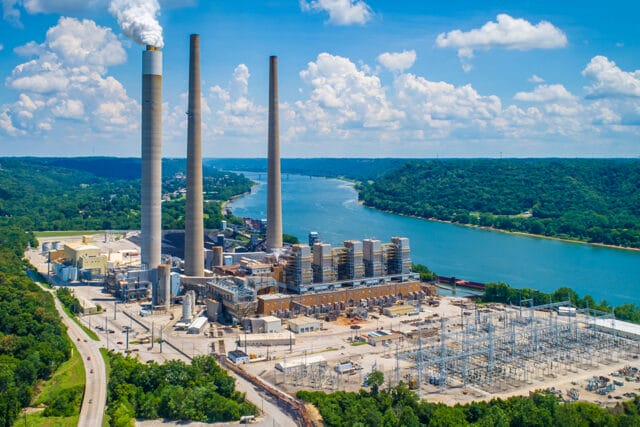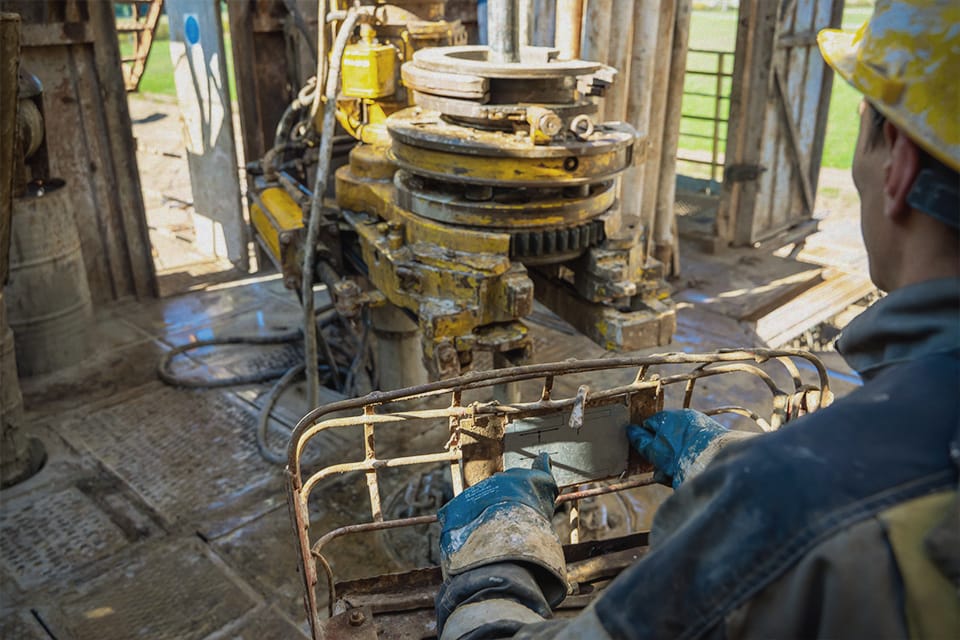
Caught-In, Caught-Between, and Struck-By Hazards in Upstream Energy

The upstream energy sector fuels our modern world, encompassing oil and gas exploration, drilling, and production. However, this vital industry comes with inherent dangers, including various caught-in, caught-between, and struck-by hazards that can lead to severe injuries or even fatalities.
While robust safety regulations and procedures form the foundation of a safe worksite, understanding these hazards and taking preventative measures is crucial for everyone in upstream oil and gas.
This article discusses examples of each hazard and suggests strategies to avoid them.
Top 4 Caught-In Hazards
1. Unguarded Machinery
Exposed gears, belts, or rollers on machinery can easily snag clothing or limbs, leading to serious injuries. So, companies should conduct regular inspections and verify that machinery is adequately maintained to prevent malfunctions.
Also, workers should verify all equipment has proper guards before use to prevent accidental contact with moving parts. They should never attempt to operate machinery with missing or malfunctioning guards.
2. Confined Spaces
Working in confined spaces like tanks, vessels, or pits poses suffocation hazards, and strict confined space entry procedures are essential.
These procedures include thorough risk assessments, obtaining permits, ensuring proper ventilation, and having a buddy system for monitoring and emergency response.
3. Conveyor Belts and Rollers
Getting caught in conveyor belts and rollers can cause crushing injuries, and guarding these moving parts and ensuring safe work practices around them are crucial. Workers should never reach over or under conveyor belts while they are operational.
4. Drill Pipes
Getting caught between drill pipe sections during handling or transportation can lead to severe injuries, so proper handling procedures and designated lifting equipment are essential for safe drill pipe handling.
Also, safety managers should require clear communication on the wors site to ensure everyone is aware of drill pipe movement.
Top 4 Caught-Between Hazards
1. Moving Vehicles and Stationary Objects
Workers on congested oil and gas worksites risk getting caught between a vehicle and a wall, another vehicle, or equipment.
Safety managers should enforce clear communication throughout the worksite and ensure that everyone is aware of their surroundings, especially the locations of large stationary objects and moving vehicles. Both of these are crucial for preventing these incidents.
Also, workers on foot should maintain a safe distance from those moving vehicles and be aware of blind spots.
2. Heavy Machinery and Structures
Being caught between a moving piece of machinery and a wall, another machine, or a load being lifted is a significant danger.
Workers can avoid these hazards by following established operating machinery and lifting equipment procedures, using spotters for guidance, and maintaining clear. Additionally, they should never enter the path of moving machinery or loads.
3. Falling Objects and the Ground
If a worker trips while another worker is lifting a heavy object above them, they are at risk of being crushed.
Management can mitigate this risk by enforcing safe lifting practices and designated work zones and maintaining a clean, trip-free work environment. Workers should also be aware of their footing and avoid carrying objects that obstruct their vision.
4. Closing Doors or Valves
Hands or limbs can become trapped during the operation of doors and valves. Workers should ensure that safety guards are in place and functional on all closing mechanisms, and they should never place hands or limbs near closed doors or valves unless properly secured.
Top 4 Struck-By Hazards
1. Falling Objects
Gravity is a constant threat. Tools, equipment parts, debris – even seemingly harmless items like hard hats – can inflict significant injuries if they land on someone below. As such, safety managers must take specific actions to mitigate the risks of falling options.
First, they should ensure regular inspections of tools and equipment to identify and address potential issues that could lead to tool failure or dropped objects.
Second, they should restrict access to designated areas below where jobs occur at heights, limiting the number of workers exposed to falling objects.
Finally, safety managers should ensure worksites include proper fall protection equipment, such as guardrails, safety nets, and fall arrest systems, which is essential for workers operating at elevated levels to avoid struck-by hazards.
2. Moving Vehicles
Collisions with trucks, forklifts, or other vehicles can be devastating, and clear communication and adherence to traffic safety rules are critical in upstream operations, which often involve heavy machinery and congested work zones.
Avoiding these incidents might require designated traffic lanes, visible signage, and ensuring all workers are aware of moving vehicles. Additionally, on-site vehicles should be regularly maintained to prevent mechanical failures that could lead to accidents.
3. Falling Trees or Branches
While seemingly innocuous, falling trees or branches pose risks during clearing operations or when workers perform tasks in forested areas.
Effective ways to avoid these risks and enhance safety are pre-work inspections that identify hazards like dead or overhanging branches and proper clearing techniques that remove the hazards and minimize the risk of falling trees or branches in the future.
4. Flying Objects
Explosions, high-pressure releases, or tools launched from equipment can all send debris flying with immense force, creating struck-by hazards.
Management should ensure proper training for workers in recognizing and responding to potential explosion or pressure-release situations, which is vital. Furthermore, establishing clear communication and designated safe zones during high-risk activities also helps minimize the risk of flying object injuries.
Avoiding These Stuck-by Hazards Requires the Industry’s Top Risk Management Solutions
Upstream oil and gas is a vital industry but also inherently risky. However, these risks can be significantly mitigated through a shared commitment to safety. From the leadership setting the tone from the top to individual workers following safe work practices, everyone has a role to play to avoid caught-in, caught-between, and struck-by hazards.
However, mitigating these risks requires more than commitment. Companies must implement solutions that help management enforce best practices and a positive safety culture to maximize worksite safety.
Consider working with us to build the right solution to complement existing safety practices and safeguard your workers from the dangers of upstream oil and gas worksites.
Contact us today to learn more.




